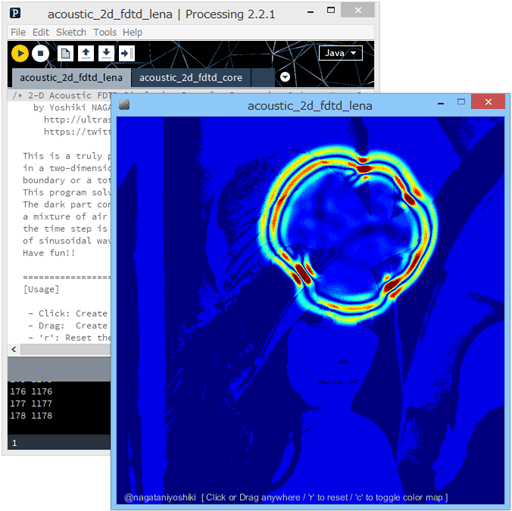

So while the energy units are not those on the left axis, both energy plots use the same units and can thus be validly compared relative to one another. In these figures the potential is shaded in arbitrary units in yellow, while the total energy of the wavepacket is plotted as a green line, in the same units as the potential. It is possible to change those arrays after making the grid.įor stability reasons, it is recommended not to change this value.It only requires Numpy and Matplotlib. Internally, these variables will be converted for performance reasons to their inverses grid.

In the last case, the shape implies the possibility for different permittivity for each of the major axes so-called uniaxial or biaxial materials. Electromagnetic Simulation Using the FDTD Method with Python, 3rd Editionįor the permittivity and permeability floats or arrays with the following shapes. This means that for a grid containing a source with wavelength nm and a material with refractive index of 3.

For stability reasons, it is recommended to choose a grid spacing that is at least 10 times smaller than the smallest wavelength in the grid. Internally, these numbers will be translated to three integers: grid. If the shape is given in floats, it denotes the width, height and length of the grid in meters. A grid is defined by its shapewhich is just a 3D tuple of Number -types integers or floats. In general, "float64" precision is always preferred over "float32" for FDTD simulations, however, "float32" might give a significant performance boost. In general, the "numpy" backend is preferred for standard CPU calculations with "float64" precision. The "numpy" backend is the default one, but there are also several additional PyTorch backends. The fdtd library allows to choose a backend. The library is still in a very early stage of development, but all improvements or additions for example new objects, sources or detectors are welcome. Only some minimal features are implemented and the API might change considerably. NOTE: This library is under construction.
#Python fdtd download#
If nothing happens, download the GitHub extension for Visual Studio and try again. If nothing happens, download Xcode and try again. If nothing happens, download GitHub Desktop and try again.
#Python fdtd software#
Perfectly-matched layer PML absorbing boundaries as well as Bloch-periodic and perfect-conductor boundary conditions.GitHub is home to over 40 million developers working together to host and review code, manage projects, and build software together. Materials library containing predefined broadband, complex refractive indices. Precompiled binary packages of official releases and nightly builds of the master branch via Conda. Distributed memory parallelism on any system supporting MPI. Simulation in 1d, 2d, 3dand cylindrical coordinates.
#Python fdtd professional#
Professional consulting services for photonic design and modeling including development of custom, turn-key simulation modules, training, technical support, and access to Meep in the public cloud via Amazon Web Services AWS are provided by Simpetus. If you have questions or problems regarding Meep, you are encouraged to query the mailing list. Acknowledgements provides a complete listing of the project contributors. The Meep project is maintained by Simpetus and the developer community on GitHub. For bug reports and feature requests, please file a GitHub issue. This list can also be accessed using a newsgroup reader via the NNTP interface address: news. The meep-discuss archives includes all postings since spanning a large number and variety of discussion topics related to installation, setting up simulations, post-processing output, etc. Subscribe to the meep-discuss mailing list for discussions regarding using Meep. Subscribe to the read-only meep-announce mailing list to receive notifications of updates and releases. This documentation is for the master branch of the source repository. For a list of topics, see the left navigation sidebar. Installation instructions are in Installation. Gzipped tarballs of stable versions are in Releases. The source repository is hosted on GitHub. Meep's scriptable interface makes it possible to combine many sorts of computations along with multi-parameter optimization in sequence or in parallel. This can be used to calculate a wide variety of useful quantities. A time-domain electromagnetic simulation simply evolves Maxwell's equations over time within some finite computational volume, essentially performing a kind of numerical experiment.
#Python fdtd free#
Meep is a free and open-source software package for electromagnetics simulation via the finite-difference time-domain FDTD method spanning a broad range of applications.


 0 kommentar(er)
0 kommentar(er)
